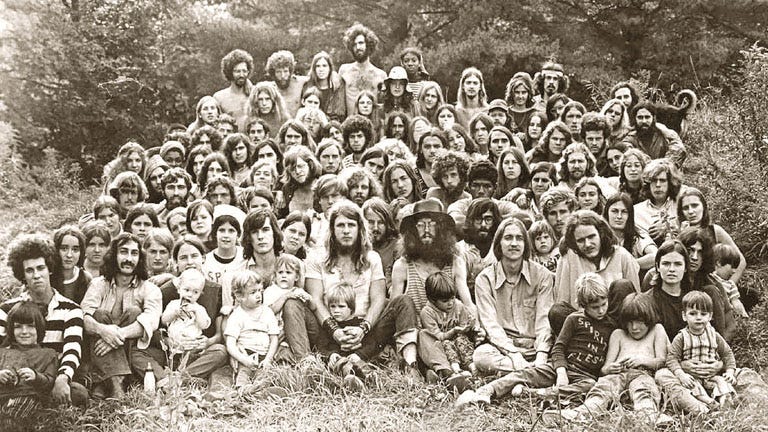The Brotherhood of the Spirit
The Brotherhood of the Spirit, which later became known as the Renaissance Community, is a fascinating chapter in the history of American communes and alternative living movements.
Emerging during the tumultuous 1960s, a period marked by significant social, cultural, and political upheaval, the Brotherhood of the Spirit exemplifies the era's quest for spiritual meaning, communal living, and an alternative to the mainstream, consumer-driven society.
Origins and Ideology
Founded in 1968 by Michael Metelica (who later changed his name to Rapunzel), the Brotherhood of the Spirit commenced in Franklin County, Massachusetts. Metelica, a charismatic leader with a vision for a utopian society, attracted followers with his ideals of communal living, spiritual awakening, and self-sufficiency. The group's foundational beliefs were rooted in a blend of Christian mysticism, Eastern spirituality, and an ethos of back-to-the-land self-reliance. This eclectic mix of spiritual beliefs was reflective of the broader counterculture movement of the time, which sought wisdom in various traditions and often emphasized a return to nature.
Growth and Development
As the commune grew, it attracted a diverse group of individuals: disenchanted youth, artists, musicians, and anyone seeking an alternative to the traditional American lifestyle. By the early 1970s, the Brotherhood of the Spirit was one of the largest and most well-known communes in the United States, with membership estimates ranging from several hundred to over a thousand at different times.
The commune's operations expanded to include various businesses and projects. One of their most successful ventures was a rock band, also named the Brotherhood of the Spirit, which toured to raise funds and awareness for the commune's activities. They also engaged in organic farming, ran a printing press, and conducted workshops and seminars on spirituality and self-sustaining living.
Challenges and Evolution
Despite its idealistic beginnings, the Brotherhood faced several challenges. Internal conflicts, financial difficulties, and scrutiny from local authorities and the media were constant issues. The communal lifestyle, which demanded a significant degree of personal sacrifice and a commitment to the collective over the individual, proved difficult for some members to sustain long-term.
In the mid-1970s, in an attempt to revitalize the community and perhaps to reflect a broader spiritual and organizational shift, the Brotherhood of the Spirit was renamed the Renaissance Community. Under this new guise, the community continued its efforts to live according to its utopian ideals, though with varying degrees of success.
Legacy
By the 1980s, the Renaissance Community began to dissolve as a coherent commune, although the property and some core members remained. The legacy of the Brotherhood of the Spirit/Renaissance Community is multifaceted. On one hand, it represents the zenith of the commune movement in the United States, embodying the era's aspirations for spiritual growth, communal living, and social experimentation. On the other hand, its challenges and eventual decline illustrate the difficulties inherent in such a radical departure from mainstream society.
Today, the story of the Brotherhood of the Spirit/Renaissance Community serves as a compelling case study in the history of American communes. It highlights the complexities of communal living and the perennial human desire to find or create utopia on earth. The community's archives, including photographs, recordings, and writings, are valuable resources for historians and anyone interested in the counterculture movements of the 1960s and 1970s.



